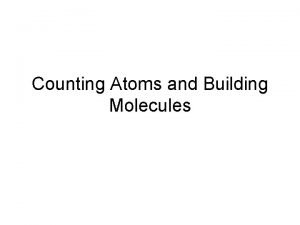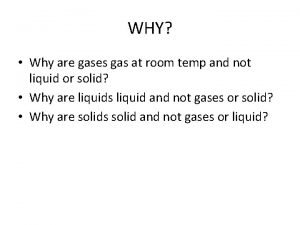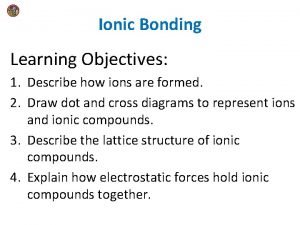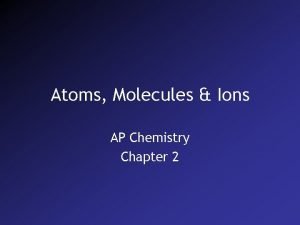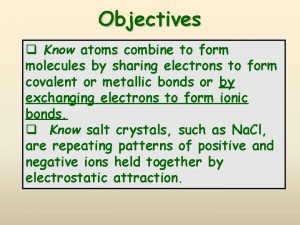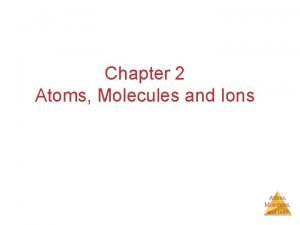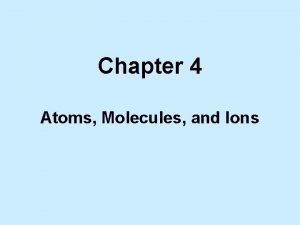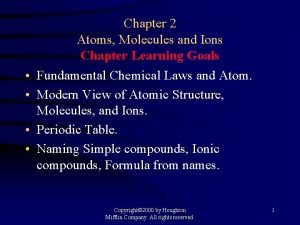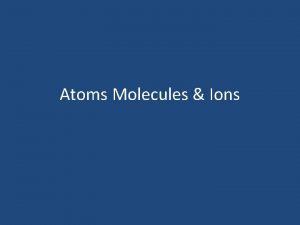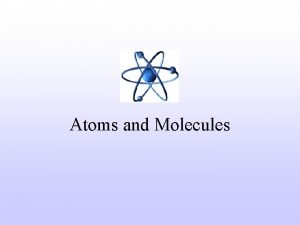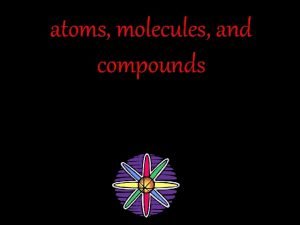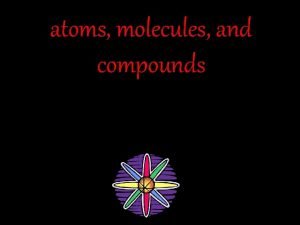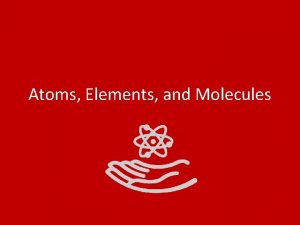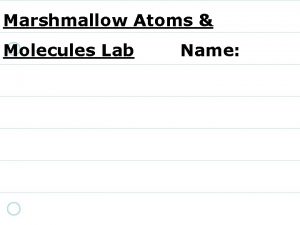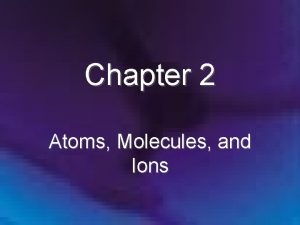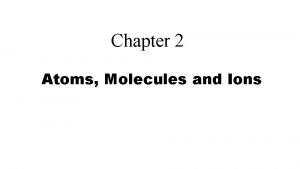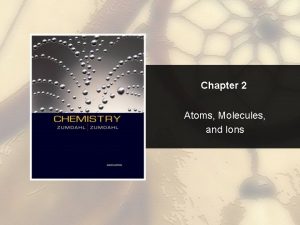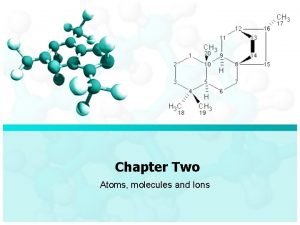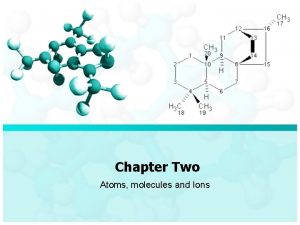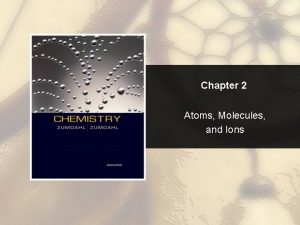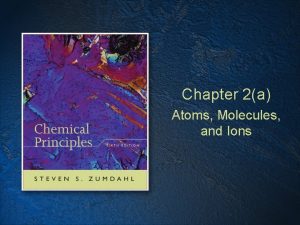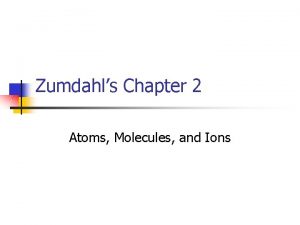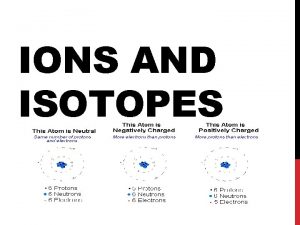Chapter 2 Atoms molecules and Ions Learning Material






















- Slides: 22

Chapter 2. Atoms, molecules and Ions 第二章 原子, 分子與離子 Learning Material for Technical English 科技英文導讀教材

Part A. Vocabulary and Phrase 2. 5 THE MODERN VIEW OF ATOMIC STRUCTURE: AN INTRODUCTION

English • • Nucleus Electron Proton Neutron 中文翻譯 • • 原子核 電子 質子 中子



English • • Isotope Mass number Atomic number Element symbol • Vanadium 中文翻譯 • • 同位素 質量數 原子數 元素符號 • 釩(元素)

• Isotopes are identified by: – Atomic Number (Z) – number of protons – Mass Number (A) – number of protons plus number of neutrons



Part A. Vocabulary and Phrase 2. 6 MOLECULES AND IONS

English 中文翻譯 • Chemical bond • Covalent bond • 化學鍵 • 共價鍵 • Ionic bond • 離子鍵

Covalent 共價的 1. 詞性: 形容詞 (adj. ) 2. 唸唸看: Co-va-lent Atom (請讀出聲音) Molecule


Part A. Vocabulary and Phrase 2. 7 AN INTRODUCTION TO THE PERIODIC TABLE

English 中文翻譯 • Periodic table • Metal • Nonmetal • 週期表 • 金屬 • 非金屬 • Groups (Families) • Periods • 族 • 週期


English 中文翻譯 • Alkali metals • 鹼金族金屬 (1 A) • Alkaline Earth Metals • 鹼土族金屬 (2 A) • Halogens • Noble gases • 鹵素族 • 稀有氣體 (7 A) (8 A)

B. Readins

• Law of conservation of mass Mass is neither created nor destroyed in a chemical reaction ( ).

• Isotopes ( ) are atoms with the same number of protons ( ) but different number of neutrons ( ).

• Covalent bonds ( ) form between atoms by sharing electrons ( ). • Ionic bonds ( ) form due to force of attraction between oppositely charged ions.

• Ion ( ) is atom or group of atoms that has a net positive or negative charge ( ). • Cation ( ) is positive ion which lost electron(s). • Anion ( ) is negative ion which gained electron(s).
 Chapter 2 atoms molecules and ions
Chapter 2 atoms molecules and ions Atoms molecules and ions
Atoms molecules and ions Atoms molecules and ions
Atoms molecules and ions Atoms molecules and ions
Atoms molecules and ions Atoms molecules and ions
Atoms molecules and ions Atoms ions and molecules
Atoms ions and molecules Atoms ions and molecules
Atoms ions and molecules Collision theory states that
Collision theory states that What do the roman numerals in a cation's name indicate
What do the roman numerals in a cation's name indicate Relationship between atoms and molecules
Relationship between atoms and molecules Mixture of compounds diagram
Mixture of compounds diagram How can you count atoms and molecules
How can you count atoms and molecules Interacting molecules or ions
Interacting molecules or ions Organic molecules vs inorganic molecules
Organic molecules vs inorganic molecules More protons than electrons
More protons than electrons Atoms or ions are considered isoelectronic if
Atoms or ions are considered isoelectronic if Why do atoms combine to form molecules
Why do atoms combine to form molecules Regents periodic table
Regents periodic table Feature of size
Feature of size Material culture examples
Material culture examples Non material culture examples
Non material culture examples Examples of non material culture
Examples of non material culture Useful materials at home
Useful materials at home











